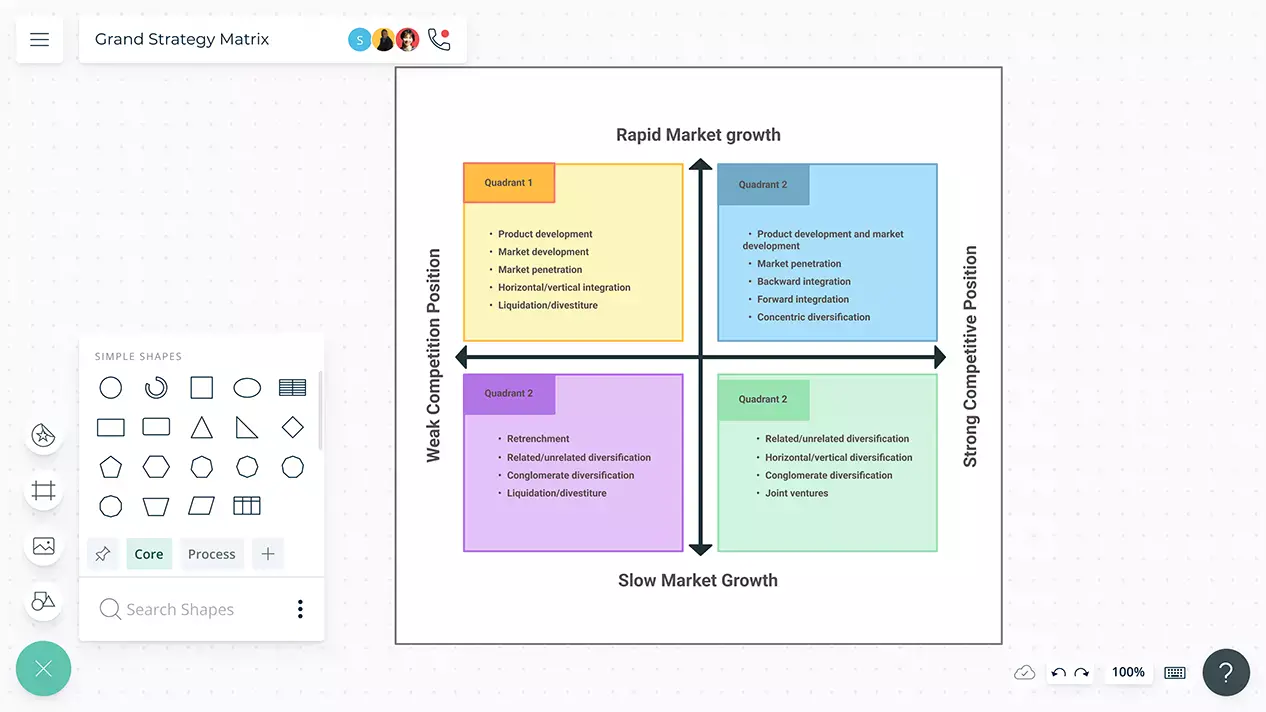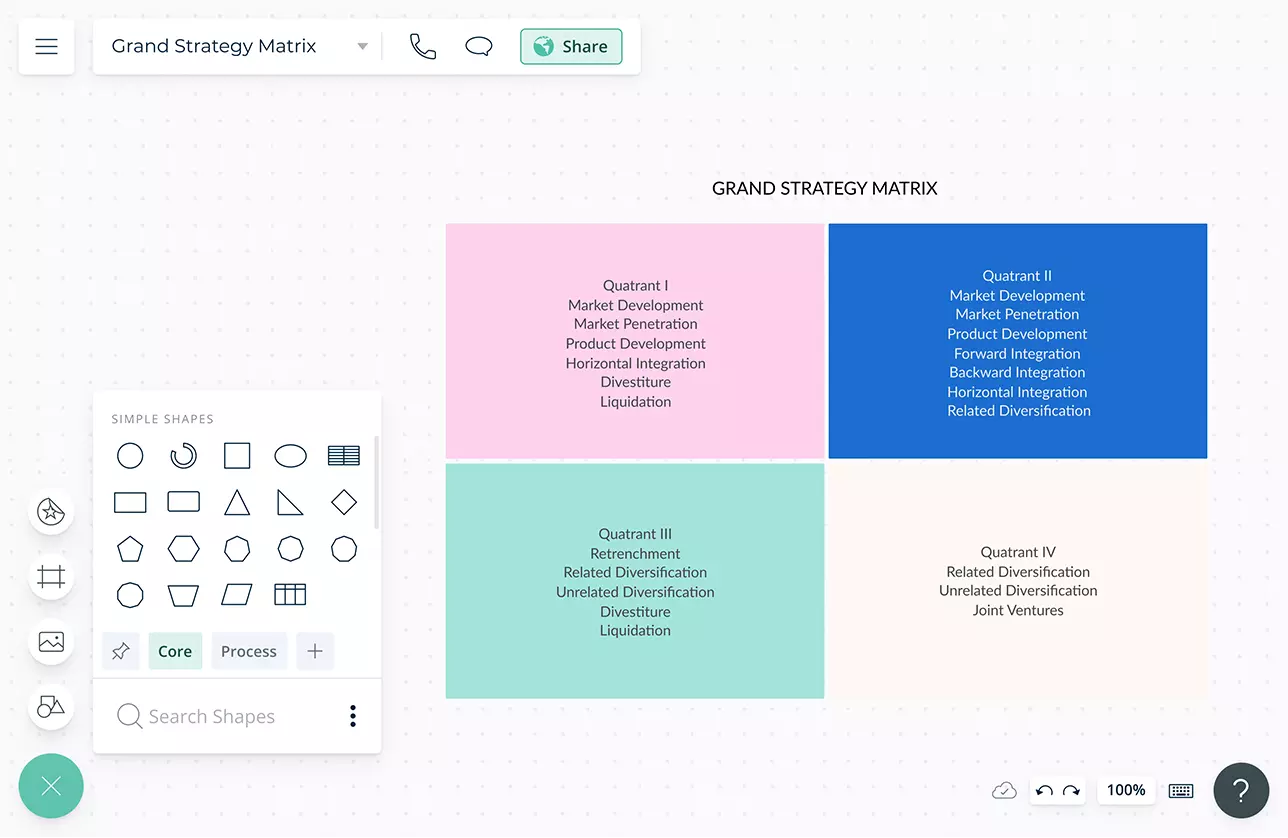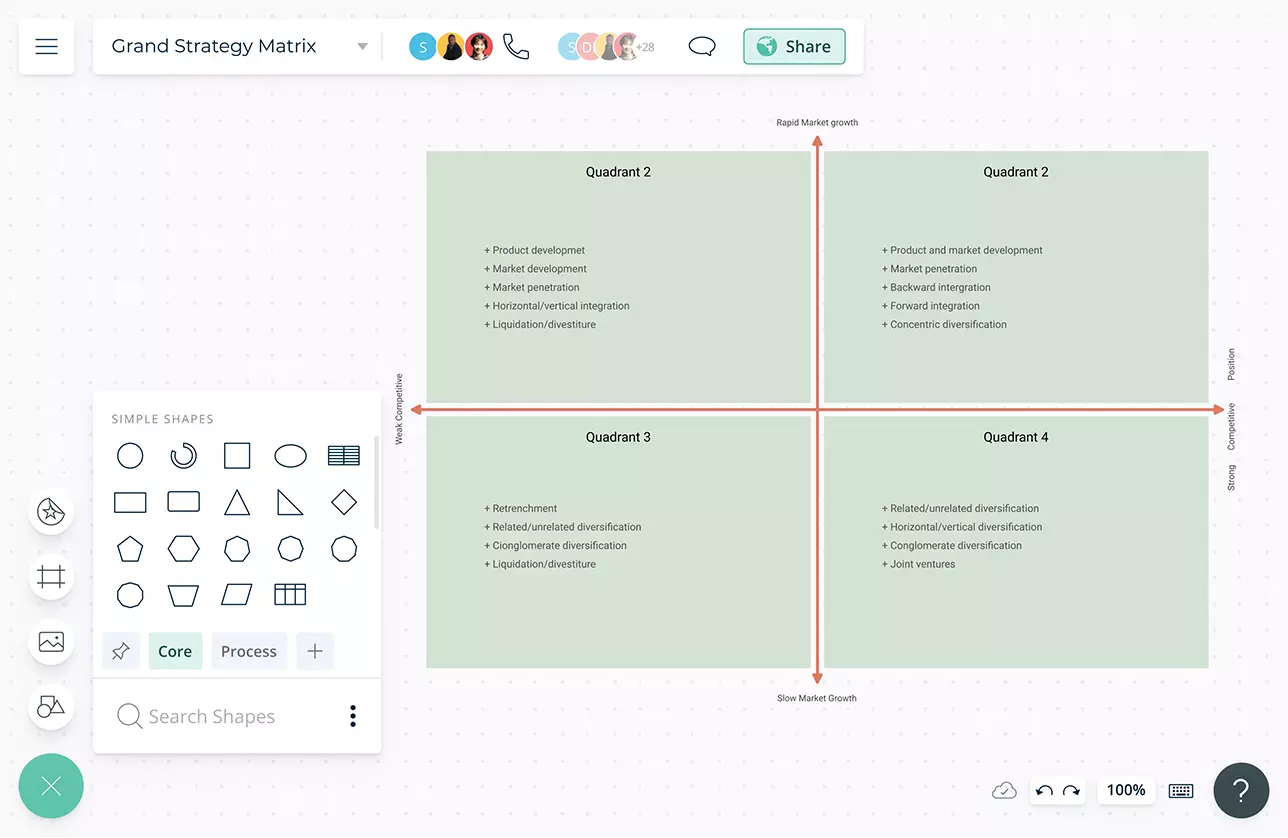Grand Strategy Matrix
Visual Tools to Uncover Strategic Insights
Formulate, identify, and analyze feasible and realistic business strategies to solve large organizational problems.
- Visual canvas to create high-level strategic plans
- Multiple frameworks and templates to easily implement and organize all your organizational strategies
- Real-time collaboration to involve all key stakeholders

- Visual canvas to create high-level strategic plans
- Multiple frameworks and templates to easily implement and organize all your organizational strategies
- Real-time collaboration to involve all key stakeholders


Create a Structure to Formulate Strategies

Smart formatting and color themes to highlight, color-code, differentiate ideas and points of interest on the canvas to identify these points easily.
Intelligent frames to immediately generate page layouts and keep the information ready to be presented at a moment’s notice.
Share workspace permissions with ease to collaborate with large teams and get multi-perspective inputs onto the same workspace.
Explore Innovative Solutions

Bring in data from multiple sources to connect multiple sources of information together on a single workspace.
Visualize complex data with ease with easy drag and drop features to help ideate and categorize different strategic decisions.
Easily navigate and present data with tooltips that link multiple documents and sources of data with explanations and descriptions within your workspace.


Create Solutions With Multiple Perspectives

Collaborator controls facilitate collaboration, review, and the exchange of information across departments.
Video conferencing is embedded into the platform to have real-time discussions while exploring organizational issues and improvements.
Export relevant comparison documents as SVGs, PDFs, and PNGs to publish, present, print, or share.
Chart a Course of Action

Analyze multiple perspectives with the same data source and convert it to a viable action plan with the use of templates.
Multiple integrations to embed your work into other platforms.
Creately provides pre-existing templates for presenting data to create strategic presentations for key stakeholders.

What Is a Grand Strategy Matrix?
The grand strategy matrix is instrumental in assisting organizations develop feasible alternative strategies. The model consists of a four-quadrant graph and is based on two dimensions - the market growth vs the organization’s competitive position. It lists the different strategic options available for businesses that are in weak or strong competitive positions in markets experiencing slow or rapid growth. Each of the quadrants contains several strategic options to help the business determine in which direction it needs to move.
The Four Quadrants of the Grand Strategy Matrix
- Quadrant 1 (Strong competitive position and rapid market growth): Businesses that are in this quadrant are in a strong strategic position and they can do well by pursuing strategies such as market penetration, market development, and product development.
- Quadrant 2 (Weak competitive position and rapid market growth): Businesses in this quadrant need to re-evaluate their current approach. While the market they are competing in is growing, they are under threat of being overshadowed by their competitors. In order to improve their competitiveness and stand their position, they can consider strategies such as market development, market penetration, product development, horizontal integration, or decentralization.
- Quadrant 3 (Weak competitive position and slow market growth): companies in this situation are faced with aggressive competition on one hand and stagnant market growth on the other. Businesses here need to consider major changes to improve their position through retrenchment, or related/ unrelated diversification, and if all else fails consider the options of divestiture or liquidation.
- Quadrant 4 (Strong competitive position & slow market growth): these businesses, stuck in a slow-growth industry with a strong competitive position, can consider options such as diversification, joint ventures, or related/ unrelated integrations in order to create a wider market for their products or services.